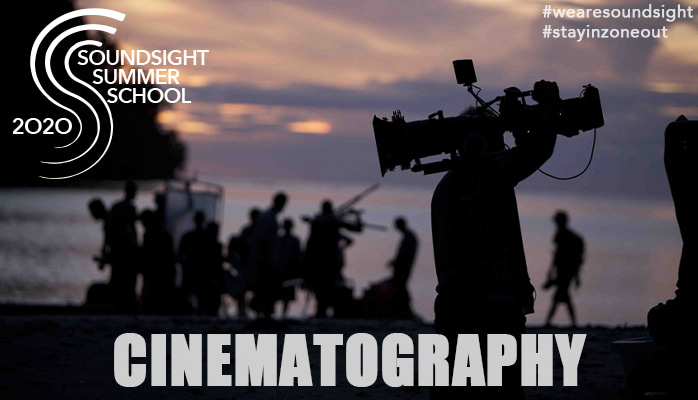Soundsight Summer School
Cinematography
https://www.linkedin.com/pulse/soundsight-summer-school-cinematography-janelle-saint-eloi

You’ve probably heard the saying “a picture is worth a thousand words”, well how much is a moving picture worth? Let’s just say a few million or billion. Cinematography is a visual art that has only become more and more precise and beautiful as the industry has progressed. Modern technology has allowed us to capture things with a camera that are unseen to the human eye. The job of the cinematographer (or director of photography – DP) is to work with the director and bring the script from words on a page and capture it from behind a lens. Cinematographers aid in translating words and actions in a script into something that audience will experience with all of their senses.
Since we have crafted lenses and camera that go beyond what we are capable of seeing, camera work gets a little more technical. So many other things such as lighting, space, angles, depth, and environment play into how things will unfold on camera and on screen. In the pre-production stages of a film, shot lists are made that map out how the piece will look frame by frame. There a lot of things are taken into consideration: Where are the characters positioned? Who should there be emphasis on? What type of lens will be needed to dramatize this shot the right way? How many angles does this scene need? Will a drone be used? With all of these questions in mind the best way to figure out if cinematography is for you is to practice. Start small and focus on taking pictures and videos with your phone, film you family and pets. Start looking at the world from behind a lens and consider the visual aspects that play into how it will look on screen. As much as cinematography is a visual, “efficio cognosio” (learn by doing) art form, there are still great resources that can get you started on understanding the role. In addition to these resources, look up the DPs of your favorite films and watch more of their work. Do they have a signature element that they always utilize? Ask yourself what it takes to carry out a certain shot and try it on a small scale with your phone or camera.
Books
- Film: A Critical Introduction (Textbook)
- Cinematography: Theory and Practice (Textbook)
- Painting with Light
- In the Blink of an Eye
Youtube
Podcasts
- The Wandering DP Podcast
- The Cinematography Podcast
- Capturing Light – A Director of Photography’s Podcast
Most people do not just fall into the job of a cinematographer, it is something that requires a a long time of practicing and experimenting with a camera. To be a successful cinematographer you need more than just an appreciation of cameras, you need to also have the skills to build the world from a camera. The audience will not know exactly why a scene in a movie is so aesthetically pleasing to them, your work as the DP is similar to one of a painter. We do not know every stroke that it took to make the picture, but we appreciate its complexity and beauty. Cinematographers do not start with the most expensive camera on the market, and you do not need to either. Starting as small as a smartphone and working on angles and positioning is also a great start! Like many roles in the industry, cinematography is one that you will constantly be learning new things and facing new obstacles. How you handle these obstacles will shape you as a cinematographer and as an individual because the beauty of the film industry is that forces you to keep growing and learning. Those who continue to grow will always find success.
Next week’s article is Post-Production!